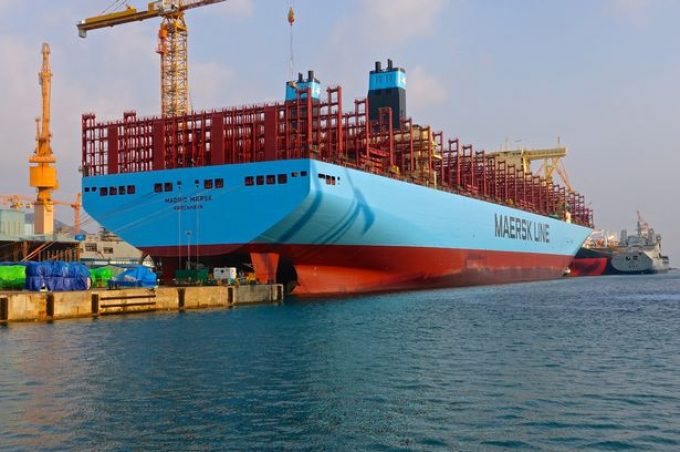'Hands on triggers' over Gaza a threat to early Red Sea return
There have been “notable increases” in maritime insurance premiums, as ceasefire uncertainty clouds the prospect ...

Vessel cascading has been an ever-present feature of container shipping since liner executives first understood the benefits of economies of scale and began the box ship capacity arms race.
But over the next few years, there are likely to be only a few arenas where it will take place, according to Drewry Maritime Advisors’ director of ports, Neil Davidson.
Mr Davidson also suggested that, with an outstanding orderbook of some 130 vessels of over 10,000 teu still to be delivered, the main areas ...
Maersk u-turn as port congestion increases across Northern Europe
Apple logistics chief Gal Dayan quits to join forwarding group
Maersk Air Cargo sees volumes fall as it aims for 'margin in favour of revenue'
Airlines slash freighter capacity post-de minimis, but 'the worst is yet to come'
Houthis tell Trump they will end attacks on Red Sea shipping
Transpac rates hold firm as capacity is diverted to Asia-Europe lanes
MSC revamps east-west network as alliance strategies on blanking vary
India-Pakistan 'tit-for-tat' cargo ban sparks sudden supply chain shocks

Comment on this article
Gary Ferrulli
December 12, 2018 at 3:13 pmA question for others – if there are 300,000 teus of cargo coming to a given port in a week, any port – what difference does it make if it is delivered on 30 x 10,000 teu ships vs 20 x 15,000 teus ships vs 15 x 20,000 teu ships? it is still 300,000 teus in a week. Same number of crane lifts, same number of trucks and chassis required, same number of gate moves. No doubt the 10,000 teu ships will be fully discharged faster than the 15,000 or 20,000 teus ships – but there are 30 of them vs 20 or 15 of the others.
And 30 ships in a week, 4.3 per day, doesn’t spread out the volumes that much over each day. Is it the ship size, or the capabilities of the infrastructure that creates the congestion? If it were 30,000 teus and 3 x 10,000 vs 2 x 15,000, one could see on a given day the congestion might be greater. Put another way, if there are 300,000 teus coming into a port in a week, that is 42,500 teus a day that have to be handled, the ship size doesn’t change that dimension.
Mike Wackett
December 17, 2018 at 10:32 amI think that most terminal managers will tell you that they would prefer more smaller ships to fewer larger vessels.
The big ULCVs cause landside pinch points and reduce berthing flexibility i.e. an 800m berth is blocked out by 2 400m ULCVs.
I can recall at TPM a couple of years back that LA/LB terminals were extremely concerned at the prospect of cascading ships to the transpac trade. There were issues with the lack of chassis as well as the number of shifts needed to complete the bigger ships e.g. going into a third ‘weak’ shift.
However, the ships have got bigger and they have coped – even with the recent big rush of cargo.
Come on you terminal operators – let us know your views, anonymous or not!
Gary Ferrulli
December 17, 2018 at 3:40 pmI think you are right on what they would prefer and why – the infrastructure hasn’t caught up with the ships. And in the case of TP, especially the West Coast, the labor moves at the same pace as 25 years ago regardless of equipment and technology.
But reality is that ships won’t get smaller, volumes won’t decrease except in times of serious economic downturns, so get the infrastructure and labor inline with the realities. Look at crane productivity in China, UAE, Japan and Rotterdam vs the US West Coast. The US East Coast and Gulf is even better than the West Coast. It isnt the ships, it is infrastructure exacerbated by labor.